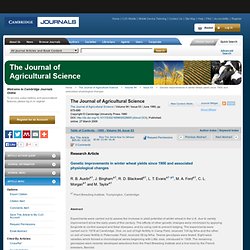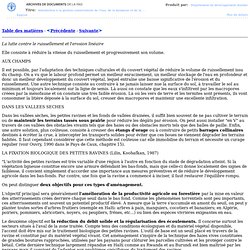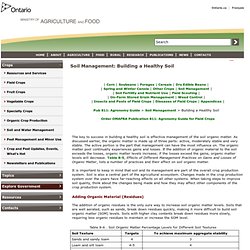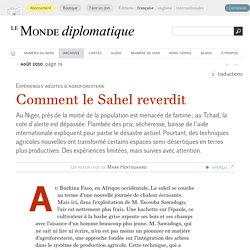

Off the Food Grid: Crawl off ... or not ... This year was a kind of amazing one for me.

You know how, at the end of a novel, several seemingly separate threads all come together in a way that totally make sense? That's how I've been feeling. Most of my childhood, I was one of those geeky kids that kept a microscope and collection jars handy. I spent vacation in ponds, collecting pond scum and tadpoles, and growing them in containers. I was going to be a microbiologist.
This year though, I noticed this picture: I laughed. I stopped laughing though, when I read the rest. First, you get the symptoms in middle-age, usually. Second, you don't have to get bit. Then ... the symptoms I've been chasing down are mostly kind of vague. First is mega-colon. Most of the pics onl ine are of autopsies, which makes me sad. Second symptom is heart issues. The T.
The confusing part though, is that several times in my life, it all just *** went away ***. Twice though, I got better when I got CT scans. Manual Seeder (3WG-5D) Manufacturer offered by Weifang Lincolnjohn Machinery Co.,Ltd. Satoyama: Japan's Secret Water Garden II. Genetic improvements in winter wheat yields since 1900 and associated physiological changes. Research Article Genetic improvements in winter wheat yields since 1900 and associated physiological changes R.

B. Austina1, J. Binghama1, R. a1 Plant Breeding Institute, Trumpington, Cambridge Abstract Experiments were carried out to assess the increase in yield potential of winter wheat in the U.K. due to variety improvement since the early years of this century. The average yield of the 12 varieties and lines tested was 3·96 t/ha in Paternoster Field and 6·40 t/ha in Camp Field. The newer, high yielding, varieties were shorter and reached anthesis earlier than the older varieties. It is argued that by a continuation of the trend towards reduced stem length, with no change in above-ground biomass, breeders may be able to increase harvest index, from the present value of about 50% to about 60%, achieving a genetic gain in yield of some 25%. (Received December 06 1979) (Revised December 06 1979) Correspondence: p1 Present address: Division of Plant Industry, CSIRO, P.O. AGL - Land and Water Publications Series.
The Land and Water Division aims at enhancing the agricultural productivity and advancing the sustainable use of land and water resources through their improved tenure, management, development and conservation.

It addresses the challenges member countries face in ensuring productive and efficient use of land and water resources in order to meet present and future demands for agricultural products, while ensuring the long-term sustainability of the land and water quantity and quality. It promotes equitable access to these natural resources with a view to enhancing productivity, livelihoods and ecosystem services. It provides assistance to member nations in developing policies, programmes, best practices and tools in the fields of irrigation and drainage, soil conservation, drought mitigation, water rights, access to natural resources, and improvement of land markets. La lutte contre le ruissellement et l'erosion linéaire. Table des matières - Précédente - Suivante La lutte contre le ruissellement et l'erosion linéaire Elle consiste à réduire la vitesse du ruissellement et progressivement son volume.

Sols / SOiL. ECHO - Chapter 6 Soil Health and Plant Nutrition. Soil and Health Library. Healthy Soil - Management. | Corn | Soybeans | Forages | Cereals | Dry Edible Beans | | Spring and Winter Canola | Other Crops | Soil Management | | Soil Fertility and Nutrient Use | Field Scouting | | On-Farm Stored Grain Management | Weed Control | | Insects and Pests of Field Crops | Diseases of Field Crops | Appendices | Pub 811: Agronomy Guide > Soil Management > Building a Healthy Soil Order OMAFRA Publication 811: Agronomy Guide for Field Crops The key to success in building a healthy soil is effective management of the soil organic matter.

As discussed earlier, the organic matter is made up of three parts: active, moderately stable and very stable. The active portion is the part that management can have the most influence on. It is important to keep in mind that soil and its management are part of the overall crop production system. Adding Organic Material (Residues) The addition of organic residues is the only sure way to increase soil organic matter levels. Manure Compost Other Organic Materials. Semis sans labour, une première à Royaumeix ! Pour certains agriculteurs de Royaumeix, l'année 2006 restera marquée par l'adoption de nouvelles techniques culturales. Faisant fi de l'apophtegme de Sully « Labourage et pâturage sont les deux mamelles dont la France est alimentée », ceux-ci abandonnent tout simplement... leur charrue ! Qui aurait cru dans les années 50 à Royaumeix que l'on pouvait cultiver sans labourer ?
Et pourtant, la culture sans labour n'est pas nouvelle. A ce propos, Francis Forest relève que « le principe du semis direct était déjà utilisé par les agriculteurs de l'Égypte ancienne... qui se servaient d'un bâton pour faire un simple trou dans le sol où la graine était placée à la main et recouverte au pied.
Dans l'agriculture moderne des pays du Nord, c'est aux États-Unis que les premières tentatives de semis direct sans aucune préparation du sol ont vu le jour, dès la fin des années 1940 [...] Il faut dire que le semis direct – sur le chaume de la culture précédente – offre des avantages économiques certains. Comment le Sahel reverdit, par Mark Hertsgaard. Au Burkina Faso, en Afrique occidentale.

Le soleil se couche au terme d’une nouvelle journée de chaleur écrasante. Mais ici, dans l’exploitation de M. Yacouba Sawadogo, l’air est nettement plus frais. Une hachette sur l’épaule, ce cultivateur à la barbe grise arpente ses bois et ses champs avec l’aisance d’un homme beaucoup plus jeune. M. Vêtu d’une robe en coton brun et coiffé d’une calotte blanche, M. . « Les gens se sont retrouvés dans une situation si catastrophique qu’il leur a fallu changer leur mode de pensée », raconte M. Land Institute : Perrenial Grain.